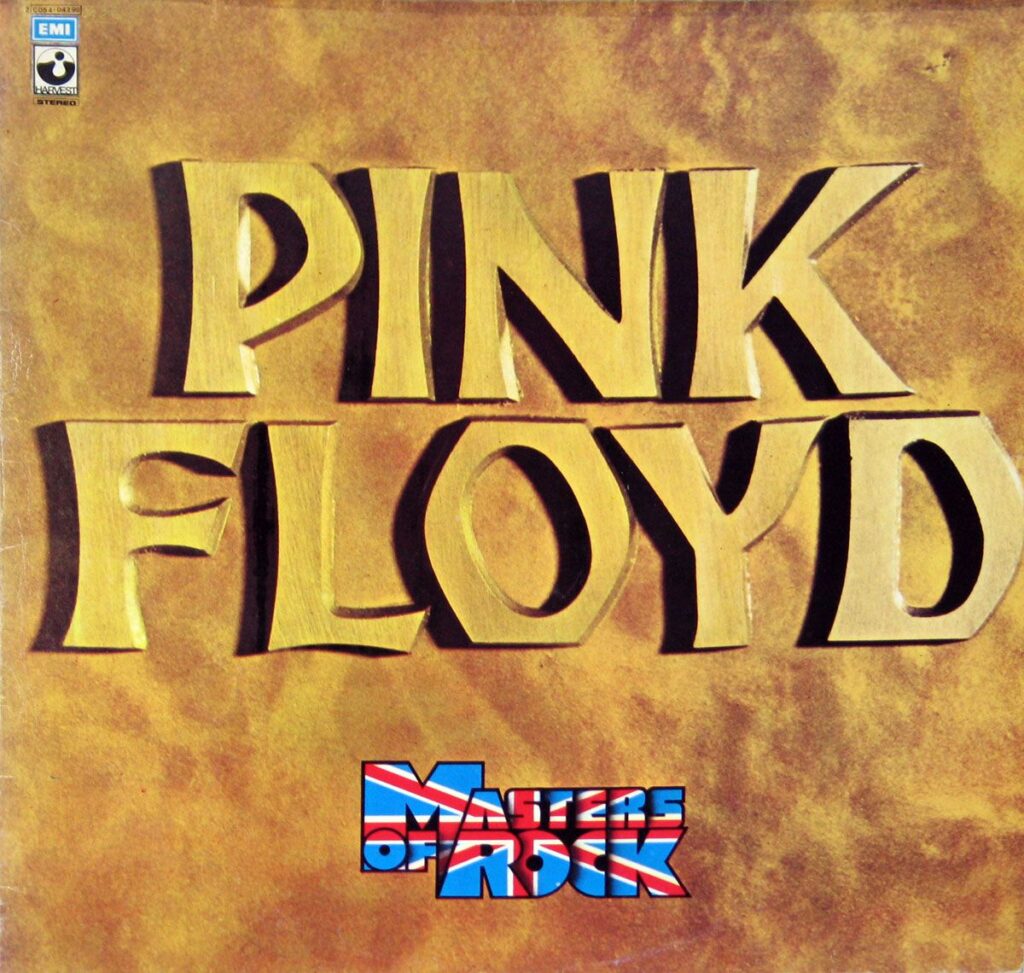
David Gilmour. The name itself conjures images of soaring solos, atmospheric soundscapes, and an impeccable sense of musicality that defined an era of rock. As Pink Floyd’s lead guitarist and vocalist, his distinctive tone and emotionally charged playing style didn’t just contribute to progressive rock; they helped write its very lexicon. Generations of guitarists, from seasoned pros to aspiring bedroom shredders, have chased that elusive Gilmour sound, a quest that inevitably leads them into the fascinating world of his meticulously curated gear. This isn’t just a collection of instruments; it’s an arsenal of sonic tools, each piece playing a crucial role in crafting some of the most iconic music ever recorded.
What truly elevates David Gilmour’s gear choices to legendary status is his masterful ability to seamlessly blend vintage equipment with innovative modifications and, at times, modern technology. This approach has allowed him to forge timeless tones that resonate across decades, pushing the boundaries of what’s achievable with an electric guitar. From the early, experimental days of Pink Floyd to his poignant solo endeavors, Gilmour has consistently demonstrated an profound understanding of how instruments, amplifiers, and effects interact to create a cohesive and deeply expressive musical voice.
For any gear enthusiast, Pink Floyd fanatic, or guitarist simply seeking to unravel the magic behind his sound, understanding Gilmour’s instrument choices is paramount. In this comprehensive guide, we’ll embark on an extraordinary journey into the very heart of David Gilmour’s guitar collection. We’ll explore 13 of his most significant guitars, delving into their unique characteristics, historical significance, and the indelible marks they’ve left on the sonic tapestry of rock music. Prepare to dive deep into the instruments that shaped an unparalleled sonic legacy.

1. **The Legendary Black Strat (1969 Fender Stratocaster)**Undoubtedly the crown jewel in David Gilmour’s formidable collection is his 1969 Fender Stratocaster, affectionately known to millions as “The Black Strat.” This guitar, initially a sunburst model, underwent a transformation in Gilmour’s hands, being refinished in black and becoming his primary instrument from 1970 onwards. Its presence is woven into the fabric of Pink Floyd’s most cherished albums, including “The Dark Side of the Moon,” “Wish You Were Here,” and “The Wall,” making it arguably the most important instrument he owns.
What makes The Black Strat truly special is its unique journey of modifications and evolving components. The guitar proudly features a 1969 maple neck, adorned with a 7.25″ radius rosewood fingerboard and vintage-style frets, providing a classic Fender feel. Over the years, Gilmour’s relentless pursuit of tone led him to experiment with various pickup configurations, including esteemed Seymour Duncan SSL-1C and DiMarzio FS-1 pickups in the bridge position, each contributing to different sonic flavors during distinct eras. A Kahler tremolo system was even added in the 1980s, though Gilmour’s preference for tuning stability often meant blocking it off.
This iconic instrument’s distinctive characteristics are immediately recognizable to any fan. Its powerful bridge pickup sound delivers searing, articulate leads, while the smooth middle position offers nuanced versatility. The warm neck pickup clarity, on the other hand, provides the perfect canvas for expressive melodies. These qualities made it an ideal partner for Gilmour’s emotive playing style, allowing him to effortlessly transition from the legendary, soul-stirring solos of “Comfortably Numb” to the delicate, introspective melodies found in “Wish You Were Here.” The guitar’s inherent versatility enabled Gilmour to achieve an astonishing breadth of tones, ranging from crystal-clear cleans to thick, harmonically saturated distortion, all within the confines of this single, extraordinary instrument.
Its enduring significance is best captured in Gilmour’s own words: “I believe it was made in 1969, and I bought it at Manny’s on 48th Street in New York in 1970. It’s been on pretty much, well, most Pink Floyd recordings from then up until the 80s when I put it out to pasture for a while. But then I brought it back again, and it’s still the guitar I play more than any other.” This testament from The David Gilmour Podcast underscores the Black Strat’s unparalleled legacy as the cornerstone of his, and by extension, Pink Floyd’s, sonic identity.
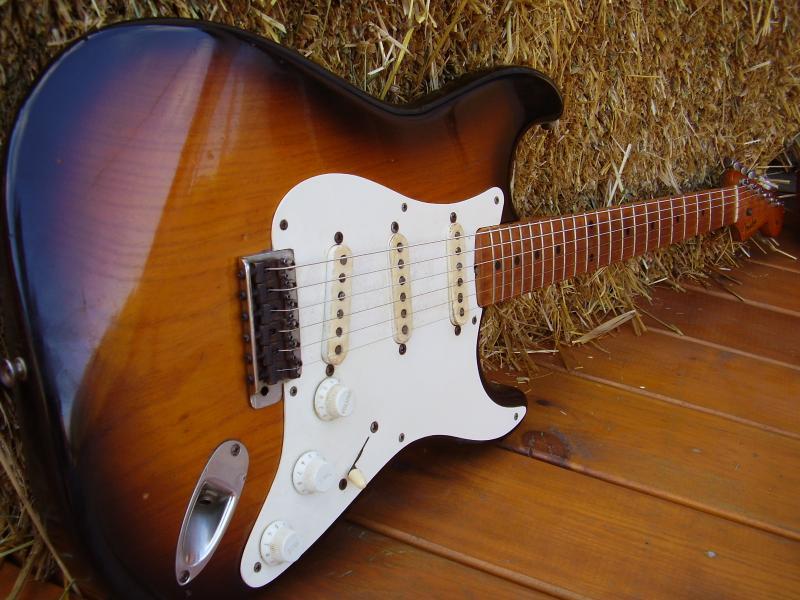
2. **1954 Fender Stratocaster #0001**Among the many treasures in Gilmour’s vault, the 1954 Fender Stratocaster serial #0001 stands out for its immense historical significance. Despite its seemingly definitive designation, this guitar wasn’t the very first Stratocaster ever produced; rather, it was one of the earliest production models to roll off Fender’s legendary assembly line. Gilmour acquired this remarkable instrument in the 1970s, integrating it into his studio work for several recordings, although it never became his primary touring companion.
The 1954 Strat #0001 embodies all the quintessential characteristics of those pioneering early Stratocasters, making it a true collector’s item and a testament to Fender’s initial design genius. It features a one-piece maple neck, carved with a distinctive “V” profile that offers a unique tactile experience for players. Complementing this, original Kluson tuning machines ensure reliable performance, while its authentic pickups with staggered pole pieces deliver the classic, articulate chime that defined the early Stratocaster sound. These elements combined to create an instrument that was both a piece of history and a highly playable guitar.
Its unique tonal qualities set it apart from later models. This 1954 Strat offered a brighter and more articulate voice, with an inherent clarity and definition that Gilmour found invaluable for specific studio applications. When a track demanded extra sparkle or precise note separation, the #0001 stepped forward, providing a sonic foundation that perfectly complemented Pink Floyd’s intricate arrangements. It was a specialist tool in his extensive sonic palette, deployed with intent and precision to achieve particular expressive goals.
The enduring value and historical significance of this instrument were dramatically underscored in 2019 when it was sold at auction for an astonishing figure exceeding $1.2 million. This landmark sale not only reflected the guitar’s pristine condition and its status as an early production model but, perhaps more profoundly, highlighted the immense cultural and financial value attached to vintage guitars once owned and played by legendary musicians. It remains a powerful symbol of the intersection between musical artistry and historical artifacts.

3. **1955 Gibson Les Paul Goldtop**While David Gilmour is predominantly synonymous with Fender Stratocasters, his sonic explorations occasionally led him to embrace the distinct character of Gibson guitars for specific tonal applications. A notable example of this versatility is his 1955 Gibson Les Paul Goldtop, an instrument that lent its thick, powerful voice to crucial tracks, most famously featuring on “Another Brick in the Wall, Part 2” and other compositions from the seminal “The Wall” album. The guitar’s P-90 pickups delivered a dramatically different sonic character compared to his beloved Stratocasters, offering a warmer, thicker, and more pronounced midrange presence that provided a perfect contrast to the bright chime of a Fender.
Several key construction differences between the Les Paul Goldtop and Gilmour’s typical Fenders contributed to its distinctive sound and feel. The Les Paul’s set neck design, where the neck is glued into the body rather than bolted on, often contributes to enhanced sustain and resonance. Its mahogany body, capped with a maple top, combined with the raw power of its P-90 single-coil pickups, created a unique and aggressive tone. This tonal profile perfectly complemented the heavier, more confrontational sound that Pink Floyd explored with “The Wall,” providing the necessary bite and girth for tracks demanding a different kind of sonic intensity. The guitar’s wraparound bridge further contributed to its unique sustain and resonant characteristics, making it an invaluable tool for specific musical passages.
Like many of his historically significant instruments, this 1955 Les Paul Goldtop was also part of the monumental 2019 auction, where it fetched nearly $450,000. Its sale marked the conclusion of Gilmour’s personal ownership of this treasured instrument, yet its sonic contributions to his body of work continue to resonate. The recordings made with this powerful Les Paul remain an enduring source of inspiration for guitarists seeking to unlock similar warm, thick, and impactful tones, cementing its place in the annals of rock guitar history.

4. **Gretsch Duo Jet**Beyond his primary Fenders and the occasional Gibson, Gilmour’s collection reveals a deep appreciation for instruments that offer distinct tonal palettes. The Gretsch Duo Jet is one such example, a hollow-body guitar he primarily utilized for solo work and tours, showcasing his willingness to experiment beyond his established sound. This choice demonstrates a keen understanding that different musical contexts call for different sonic textures, and the Duo Jet certainly delivered a unique flavor.
What truly defines the Gretsch Duo Jet’s contribution to Gilmour’s sound is its distinctive Filter’Tron pickups. These pickups, characteristic of Gretsch guitars, produce a tone that is often described as articulate, punchy, and with a unique clarity that sits beautifully in a mix without being overly harsh. They offer a different harmonic richness compared to the single-coils of a Strat or the humbuckers of a Les Paul, providing Gilmour with an alternative voice when the music called for it.
The Duo Jet’s construction also plays a pivotal role in its sonic identity. As a hollow-body guitar, it offers a resonance and airiness that solid-body instruments cannot replicate. This distinctive semi-hollow construction contributes to its unique sustain and feedback characteristics, allowing Gilmour to explore different expressive possibilities. It was a strategic addition to his arsenal, providing colors that enriched his solo work and live performances, proving that his sonic legacy isn’t confined to just one type of instrument.

5. **Fender Telecaster Custom**For a period marked by a more aggressive and biting sound, David Gilmour turned to the Fender Telecaster Custom, an instrument that featured prominently during Pink Floyd’s “Animals” era. This guitar’s unmistakable character can be heard on tracks like “Dogs” and “Pigs (Three Different Ones),” where its distinct voice added a gritty edge to the album’s stark musical landscape. The Telecaster Custom provided a sonic departure from the smoother tones of his Stratocaster, perfectly aligning with the thematic intensity of “Animals.”
The Telecaster’s inherent tonal characteristics—particularly its biting bridge pickup and quintessential twangy character—were instrumental in shaping the sound of this period. The bridge pickup of a Telecaster is renowned for its piercing clarity and ability to cut through a mix, delivering a raw, unpolished tone that was a perfect fit for the album’s mood. This sharp articulation provided a compelling contrast to the more ethereal sounds Pink Floyd had explored previously, showcasing Gilmour’s adaptability in tone selection.
The Telecaster Custom’s sound perfectly suited the more aggressive sonic direction of the “Animals” album. It allowed Gilmour to infuse his playing with a harder edge, providing the necessary sonic gravitas for the album’s incisive social commentary. This specific Telecaster was more than just another guitar in his collection; it was a carefully chosen tool that enabled him to articulate the album’s powerful and often confrontational musical themes, solidifying its place in his storied career.
Read more about: Inside John Mayer’s Exotic Guitar Arsenal: From Vintage Fender Stratocasters to Custom Paul Reed Smith Axes

6. **Fender Esquire ‘Workmate’**Another fascinating piece of Gilmour’s electric guitar puzzle is his Fender Esquire ‘Workmate,’ a heavily modified single-pickup Telecaster. This specialized instrument was specifically deployed during “The Wall” sessions, serving a unique purpose in achieving the album’s dense and multi-layered production. The Esquire, with its stripped-down simplicity, offered a directness that proved invaluable for certain sonic requirements, highlighting Gilmour’s meticulous approach to studio craftsmanship.
The ‘Workmate’ Esquire provided a raw, uncompromising sound that possessed an uncanny ability to cut through the album’s often-dense production. Its single-pickup configuration, usually a bridge pickup, yields a brighter, punchier tone with less complexity than multi-pickup guitars. This characteristic was ideal for adding specific textures or providing a sharp, focused lead line that needed to stand out without muddying the overall mix. It was a testament to Gilmour’s engineering ear, knowing exactly which tool would yield the desired sonic outcome.
The inherent simplicity of the Esquire’s design contributed to its directness. Without the added circuitry or magnetic pull of multiple pickups, the signal path is incredibly clean and immediate. This made the ‘Workmate’ an excellent choice for moments on “The Wall” where Gilmour needed a straightforward, powerful statement from the guitar. It’s a subtle but significant example of how each guitar in Gilmour’s vast collection serves a specific purpose, contributing to the diverse and rich tonal palette that has made his playing so distinctive and influential. His profound understanding of how different instruments respond to various playing techniques and effects has truly been a cornerstone in the development of his signature sound, demonstrating that true tone mastery comes from thoughtful selection and application.
As we journey deeper into the legendary vault of David Gilmour, it becomes abundantly clear that his sonic legacy is built not just on a few star players, but on a vast and versatile roster of instruments. Each guitar, whether a timeless electric or a cherished acoustic, serves a specific purpose in his unparalleled quest for tone. Now, let’s peel back the layers and uncover the remaining gems that have shaped some of rock’s most enduring soundscapes. From the nuanced bite of a dedicated studio Strat to the majestic depth of his acoustic favorites, these guitars complete the picture of a true sonic architect.
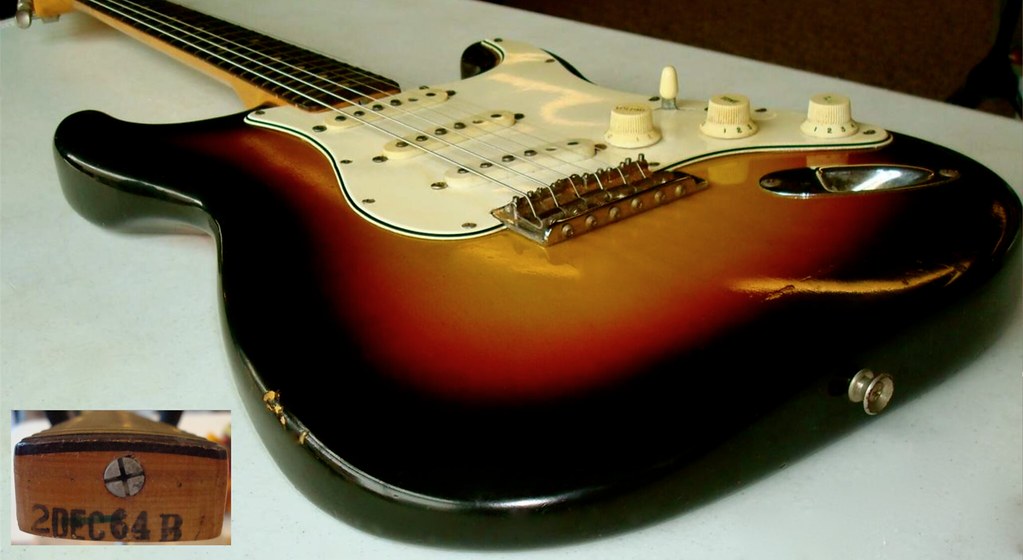
7. **1984 Fender Stratocaster 57V (Candy Apple Red)**In 1984, David Gilmour embarked on a quest to refresh his arsenal, visiting Fender’s warehouse in the UK to find instruments for his upcoming *About Face* tour. This meticulous search led to the acquisition of several new Strats, including this striking Candy Apple Red 57V model. It’s a testament to Gilmour’s relentless pursuit of perfection, always seeking out the ideal tools for his evolving musical vision, even amidst a collection already brimming with iconic instruments.
What makes this particular Strat so intriguing is its place within that acquisition. Gilmour himself noted the inconsistency in guitar quality, even from reputable manufacturers, emphasizing the importance of trying many to find the best. While he initially singled out two as his absolute favorites for the tour, this Candy Apple Red beauty was part of a subsequent batch, suggesting it joined his collection to broaden his options and perhaps fulfill more specialized roles.
A 57V Stratocaster, often referencing the vintage specifications of a 1957 model, typically boasts a comfortable “V” profile maple neck and classic single-coil pickups, delivering that quintessential bright, articulate Stratocaster chime. The vibrant Candy Apple Red finish would have also added a distinctive visual flair to his stage presence or studio sessions. This instrument showcases Gilmour’s ongoing appreciation for Fender’s timeless design, continually integrating both classic and new iterations into his sonic palette to push boundaries.

8. **Martin D-35 – Gilmour’s Favorite Guitar**When it comes to acoustic excellence, David Gilmour has consistently declared his 1969 Martin D-35 as his absolute favorite. This isn’t just another instrument; it’s a cherished companion that has graced countless songwriting sessions, recordings, and live performances throughout his illustrious career. Its warm, resonant voice forms the undeniable backbone of one of Pink Floyd’s most beloved anthems, “Wish You Were Here,” imbuing the track with its signature heartfelt depth and acoustic majesty.
The distinctive tone of the Martin D-35 stems from its superb craftsmanship and premium materials. It proudly features a unique three-piece back construction, crafted from solid East Indian rosewood, complemented by matching sides and a responsive Sitka spruce top. This dreadnought body shape is celebrated for its ability to produce a powerful bass response and crystal-clear projection, making it an ideal choice for both the intimate nuances of studio recording and the expansive demands of a large concert hall.
Over the decades, Gilmour’s D-35 has matured beautifully, its aged tonewoods and years of dedicated playing developing a rich, complex character that is instantly recognizable to fans worldwide. To ensure its versatility for live performances, the guitar is equipped with a high-quality pickup system, allowing Gilmour to achieve a consistent amplified tone while meticulously preserving the instrument’s natural acoustic purity. This careful setup has been instrumental in delivering the sonic integrity of acoustic masterpieces like “Wish You Were Here” and “Fat Old Sun” in any setting.
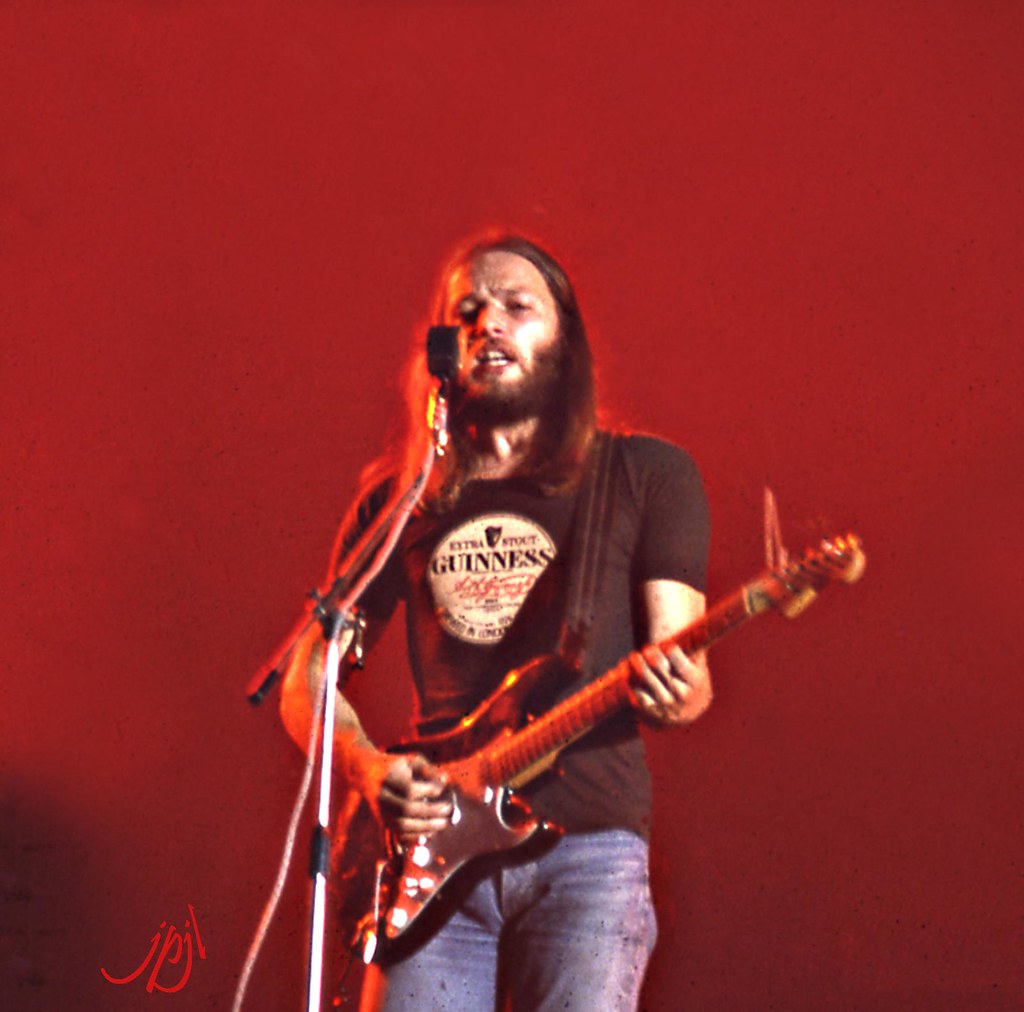
9. **Martin D12-28 12-String**For those shimmering, expansive acoustic textures that became a hallmark of Pink Floyd’s sound, Gilmour turned to his magnificent 1971 Martin D12-28 12-string acoustic. This particular instrument was indispensable for crafting the intricate 12-string parts heard on “Wish You Were Here” and various other recordings, contributing a rich, chorus-like sparkle that elevated the band’s acoustic moments to legendary status. Its presence allowed Gilmour to layer sonic tapestries with remarkable depth.
The D12-28 shares many structural similarities with Gilmour’s beloved D-35, ensuring a consistent level of Martin quality and tonal integrity. However, its defining characteristic is its twelve-string configuration, featuring double courses of strings and often a slightly longer scale length. This design creates a natural, shimmering chorus effect, where each note rings with a fullness and harmonic richness that a standard six-string simply cannot replicate, adding an almost orchestral quality to his arrangements.
Crucially, the D12-28’s role in “Wish You Were Here” is profoundly significant, where its lush voice often doubles the main six-string part, introducing an extraordinary sense of movement and texture to the arrangement. This strategic layering enhanced the song’s emotional impact, contributing to its timeless appeal. The distinct sound of this 12-string provided a vast sonic palette, allowing Gilmour to infuse his compositions with a sense of grandeur and intricate detail that further solidified Pink Floyd’s innovative acoustic landscape.
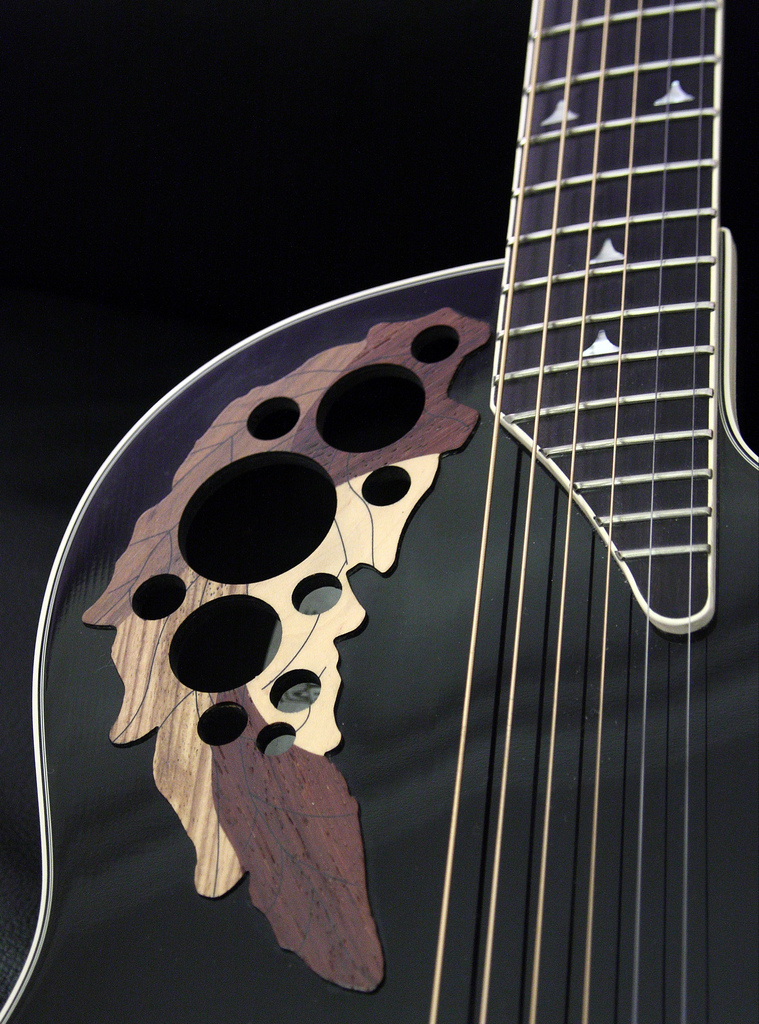
10. **Ovation 1612-4**Stepping away from traditional flat-tops for a moment, the Ovation 1612-4 found its place in David Gilmour’s collection during the pivotal *Dark Side of the Moon* era. This distinct acoustic-electric guitar was primarily deployed for live performances, a practical choice that highlights Gilmour’s pragmatic approach to stagecraft. In the early 1970s, reliable acoustic amplification on a massive concert stage was a significant challenge, and the Ovation offered a compelling solution.
The key to the Ovation 1612-4’s utility was its innovative design, featuring a Lyrachord roundback body and, crucially, sophisticated onboard electronics. These elements provided a consistency and projection that traditional mic’d acoustics often struggled to achieve in high-volume, live environments. This robust amplification system ensured that Gilmour’s acoustic passages cut through the dense soundscapes of Pink Floyd’s monumental shows, delivering clarity and presence to every corner of the arena.
While perhaps not possessing the same organic warmth as a vintage Martin, the Ovation served a vital utilitarian purpose. Its dependable output and resistance to feedback made it an invaluable asset for a band whose live performances were renowned for their intricate dynamics and expansive sonic textures. The 1612-4 allowed Gilmour to seamlessly integrate acoustic elements into Pink Floyd’s electrifying shows, proving that the right tool for the job sometimes meant embracing innovative, purpose-built instruments.
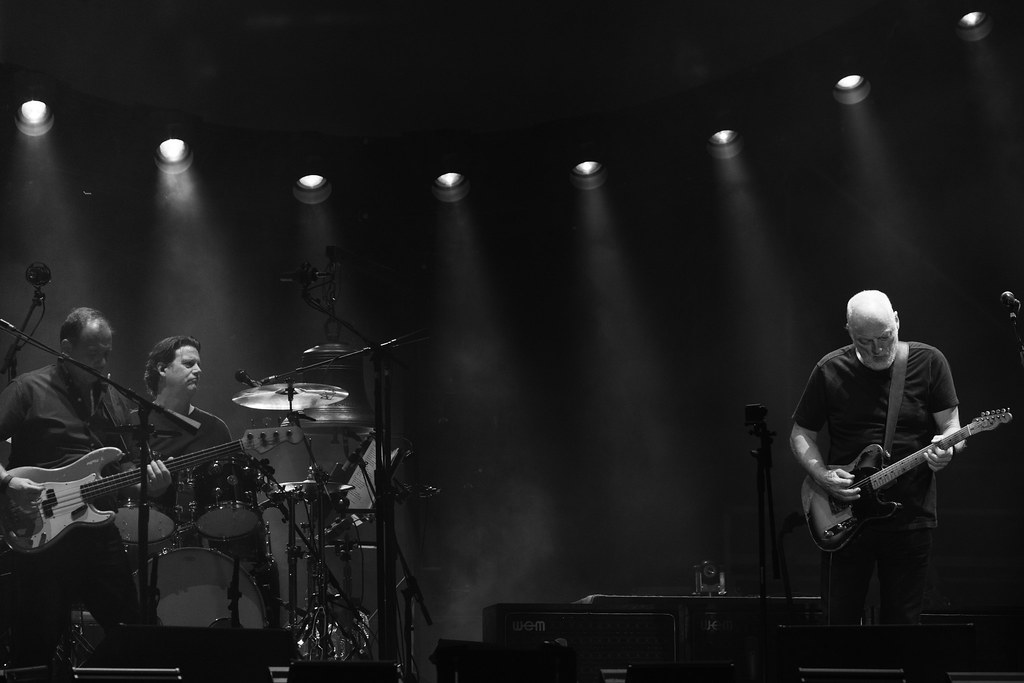
11. **Taylor 712CE**A testament to David Gilmour’s continuous quest for sonic perfection, the Taylor 712CE represents a more modern addition to his esteemed acoustic collection. This guitar signals a nuanced shift in his preferences, acquired for specific recording applications where its distinct tonal qualities were precisely what the music demanded. It demonstrates that his gear choices are never static; he consistently adapts his arsenal to the exacting requirements of new compositions and studio environments.
The Taylor 712CE is renowned for its articulate, brighter, and more focused tone compared to the typically warmer, bass-rich Martins that dominate much of his acoustic work. This tonal characteristic, often attributed to Taylor’s meticulous craftsmanship and wood selection, makes it ideal for cutting through a mix in a different way, providing clarity and sparkle where a darker, more mellow sound might obscure intricate details. It offers a fresh palette for specific sonic textures.
Gilmour’s discerning choice of the Taylor 712CE for particular recording applications underscores his profound understanding of how different instruments contribute to the overall sonic landscape. It highlights his meticulous ear for detail, where even subtle shifts in an acoustic guitar’s character can dramatically impact the emotional resonance and textural complexity of a track. This commitment to finding the perfect instrument for every nuance solidifies his reputation as a true master of tone.
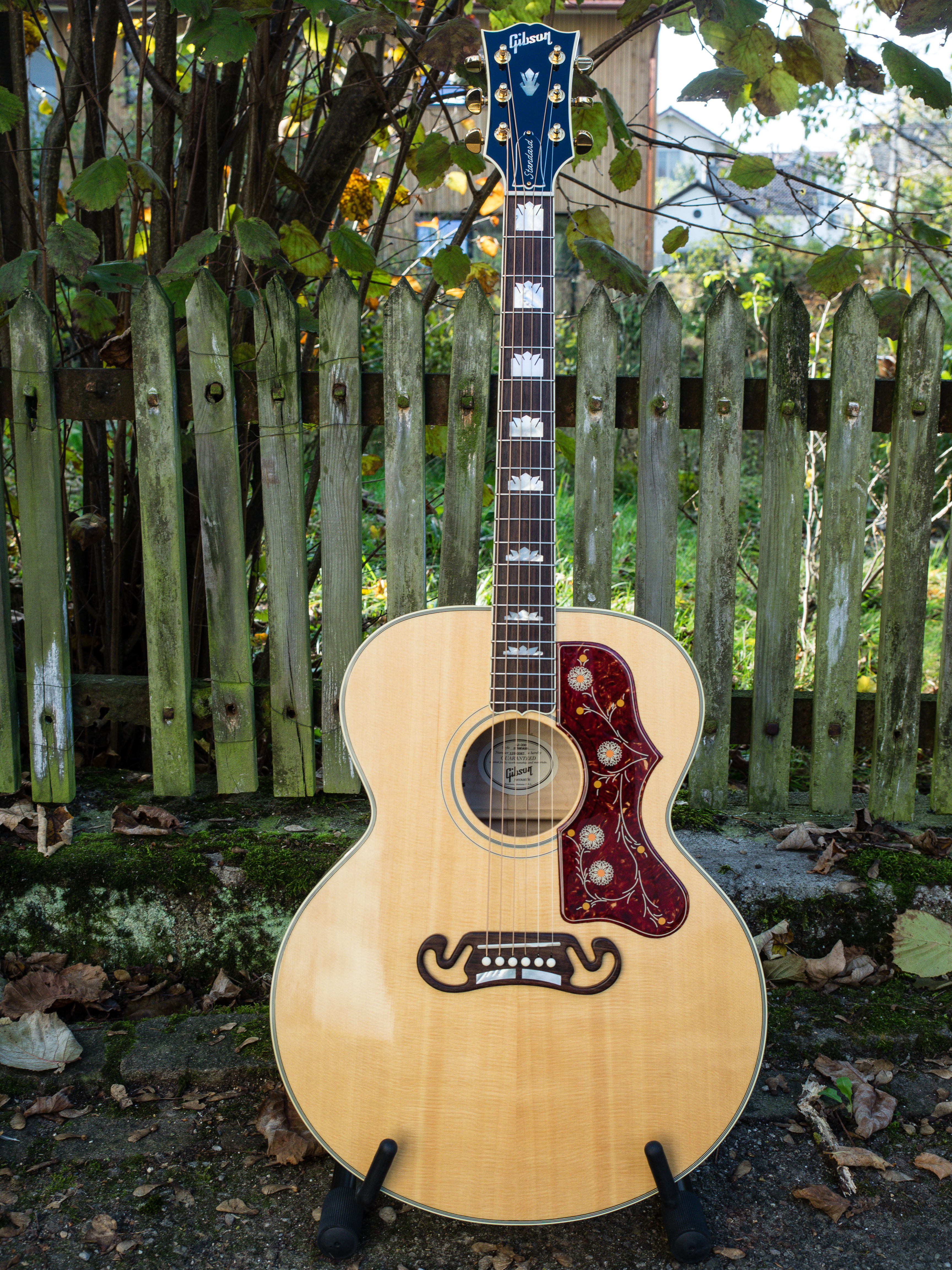
12. **Gibson J-200**Adding yet another layer to his rich acoustic tapestry, David Gilmour occasionally employed the iconic Gibson J-200 for studio work. This “King of the Flat-Tops” offered a distinctly different acoustic character from his preferred Martins, providing a unique sonic footprint that broadened the expressive capabilities of Pink Floyd’s recordings. Its presence in his studio arsenal speaks volumes about his desire for diverse acoustic voices to serve his artistic vision.
The Gibson J-200 is traditionally distinguished by its large, super jumbo body and often features maple back and sides, in contrast to the rosewood typically found in his Martins. This combination yields a brighter, punchier tone with a more pronounced midrange and a slightly less overt bass response than a dreadnought. This distinct voice allowed Gilmour to explore alternative acoustic textures, providing a vibrant contrast to the warmer, more ethereal tones he might achieve with his Martin guitars.
Gilmour’s strategic use of the J-200 for specific studio applications showcases his profound understanding of instrument dynamics and how to leverage their individual characteristics for maximum musical impact. It’s a clear demonstration that his acoustic collection is not simply a gathering of fine instruments, but a carefully curated selection of tools, each chosen for its ability to contribute a particular sonic color or texture to his unparalleled recordings, enriching the soundscapes that generations have come to love.

13. **Red Stratocaster (1957)**Among the lesser-known, yet historically significant, electric guitars in Gilmour’s extensive collection is a vintage 1957 Fender Stratocaster, affectionately referred to as the “Red Stratocaster.” This particular instrument, with its classic maple neck, found occasional deployment in the early 1970s. Its inclusion in his arsenal during this formative period underscores Gilmour’s early appreciation for the diverse voices within the Fender family, even as his primary “Black Strat” began its legendary journey.
A 1957 Stratocaster is highly prized by collectors and players alike for its classic design and iconic tone, often characterized by a clear, bell-like quality and a snappy attack. Gilmour utilized this Red Stratocaster specifically for slide work and particular studio applications. The maple neck, renowned for its brighter resonance and smooth playability, would have provided an excellent foundation for slide techniques, allowing notes to ring out with clarity and sustain.
While not a primary touring instrument, the Red Stratocaster played a crucial role as a specialized tool within Gilmour’s evolving sonic palette. Its use for specific studio tasks highlights his meticulous approach to recording, where every tonal nuance is carefully considered. This venerable instrument contributed to the rich, layered textures of Pink Floyd’s early sound, standing as a quiet testament to Gilmour’s genius in matching the right guitar to the precise musical moment.
David Gilmour’s “vault” of guitars is more than just a collection; it’s a living history of sonic innovation, a testament to a master’s unwavering commitment to his craft. Each electric riff, every delicate acoustic chord, has been born from a thoughtful interaction between artist and instrument. From the well-worn comfort of his favorite Martin D-35 to the biting clarity of a specialized studio Strat, every guitar in his possession has been a brushstroke in the expansive, breathtaking canvas of his music. This isn’t just about the wood and the wires; it’s about the magic that happens when a true artisan finds the perfect voice for his extraordinary musical soul. Gilmour’s legacy, deeply intertwined with these magnificent instruments, will continue to inspire guitarists and music lovers for generations to come, reminding us all of the profound power of tone and the enduring art of the guitar. Keep shredding, keep experimenting, and keep chasing your perfect sound, just like the maestro himself.




